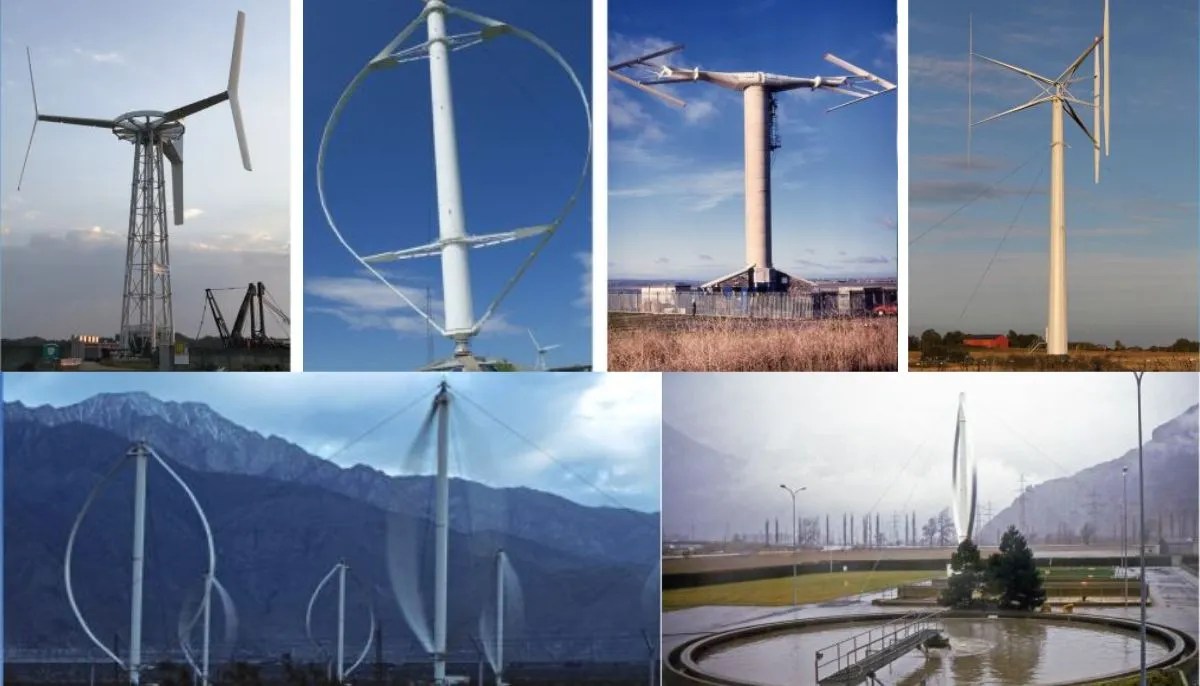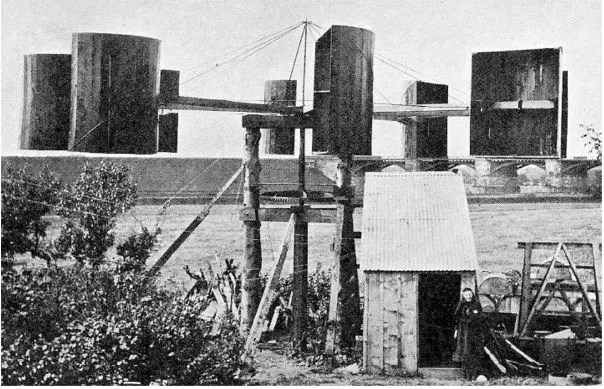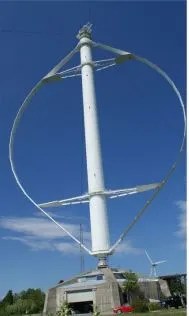A Brief History of Some Famous Vertical Axis Wind Turbines

You will be surprised to know that the first known wind turbines recorded in history were Vertical axis wind turbines, not the current dominant technology of horizontal axis wind turbines. This dates back to the 7th century B.C when vertical axis windmills were built on the Persian land.
They were based on the aerodynamic drag principle, one side of the turbine was covered while the wind pushed the other side of the blades thus creating a torque that was utilized for grinding grains.

The vertical axis wind turbines were not remain seen visible after the Persian. Europe had adopted a horizontal axis windmill design. Technological development of windmills mostly happened in Europe during the medieval times (10th-18th century) and its focus remained on Horizontal axis windmills.
In this post, we will look mostly at utility-scale vertical axis wind turbines that were deployed in the 1960s and so on. We will cover only historic and famous research-led vertical axis wind turbines.
Blyth’s Vertical axis Wind Turbines
In 1891, a Scottish professor James Blyth developed the first simple vertical-axis wind turbine that can be used to produce electricity. Before this, he also developed a multi-bladed horizontal axis wind turbine but he was not satisfied with the control performance of the multi-bladed wind turbine. So that is why he tried vertical design.
He deliberately chose the design so that the turbine became less efficient and can be controlled at higher wind speeds.

Darrieus Vertical Axis Wind Turbine
In the 1930s, Goerge Darrieus invented lift-based vertical axis wind turbines in France and filed a patent in the US in 1931. His turbine designs patent covers both curved blades and straight blade rotors.
In the configuration of the curved blades, blades are directly connected to a rotating shaft, while for straight blades, a cross arm is used to connect blades with the shaft. This cross arm also serves as structural support. check out detailed article on working and types of vertical axis wind turbines
The illustrations of both configurations are as


Sandia Vertical Axis Wind Turbine
Sandia National Laboratory conducted research on a series of vertical axis wind turbines (VAWT) from the early 1970s to the late 1990s. Here we mentioned only the largest VAWT developed by Sandia.
The curved blades vertical axis wind turbine was erected in 1988 by Sandia National Laboratory at Bushland Texas. The two-bladed rotor with a dia of 34m had a rated power of 500 kW with a variable speed synchronous generator and gearbox. As this was a research turbine, most of its parts could be exchanged to perform research on different components.
Due to its strut-free design, the turbine achieved likely the highest power coefficient of 0.43 measured for VAWT. In 1998, the turbine was decommissioned due to cracks in the foundation.

VAWTPOWER Wind Farm
During the 1983-84, Albuquerque-based VAWTPOWER Inc, installed 40 turbines in the San Gorgonio Pass. These vertical wind turbines had a rated capacity of 185 kW and were developed from the experience of Sandia turbines.

These turbines were performing well but due to some investors backout, VAWTPOWER filed for bankrupcy in 1985.
DAF Indal VAWT
The Canadian aluminum manufacturer , Dominon aluminum fabricator (DAF) indal, became collaborator with the Canadian National Research Council (CNRC) to research and develop vertical axis wind turbines. In the mid 1970s , they developed several commerical darrieus turbines.
In 1977, DAF indal, Installed a 230 kW turbine on the Magdalen Island (Iles-de-la-Madeleine) in the Gulf of Saint Lawrence. The turbine was mounted on truss tower and had flaps in the middle of the blades for air braking.

The turbine failed in 1978, the technicians left the rotor decoupled from the drivetrain overnight, the rotor overspeed led a failure in the cable and thus turbine fell off to the ground.
Adecon VAWT Windfarm
In the mid 1990s, Adecon installed ten turbines (each 150 kW) at a test site near Pincher Creek, Alberta,Canada. The Tripod lattice tower used in these turbines had a issue of induced resonance and visual impact.

Two of the turbines were toppled due to metallurgical failures and other turbines remained operational untill 1998.
EOLE Turbine
ÉOLE was inaugurated in 1987 in Cap-Chat, situated on the south shore of the Saint Lawrence river in Quebec. Eole in french Aeolus, the God of wind in Greek mythology.
With a total height of 110 m, rotating mass of 880 metric tons and a rated power of 3.8 MW, ÉOLE was by far the largest VAWT ever constructed.

The Eole turbine had a direct synchronus generator based in the ground. The total cost of turbine was 27.5 million dollar which was huge investment at that time. The turbine remained operational for 5 years and shutdown in 1993 due to bearing failure. Unfortunately, due to economical viability, turbine could not be repaired however this giant VAWT to this date still stands and serves as a great tourist destination.
Variable Geometry VAWT
In the 1980s, a company vertical axis wind turbine Ltd from uk developed a prototype of variable geometry VAWT. This Variable speed turbine of 130 kW could fold blades to regulate the power. However it was realized that, variable geometry was demmed unnnecessary as the stall can be controlled through fixed blades.

Anew Institute MW Turbine
In 2017, Anew institute , a subsidary of polish steel maker Stalprodukt S.A has built a 1.5 MW H- Rotor vertical axis wind turbine. This 1.5 MW turbine is second to only EOLE in terms of size and power. Currently, it is undergoing through testing phase.

Resource
For more in depth reading , please go through this paper.
Möllerström E, Gipe P, Beurskens J, Ottermo F, ‘A historical review of installed vertical axis wind turbines rated 100 kW and above’, Renewable & Sustainable Energy Reviews, Vol 105 (2019).


